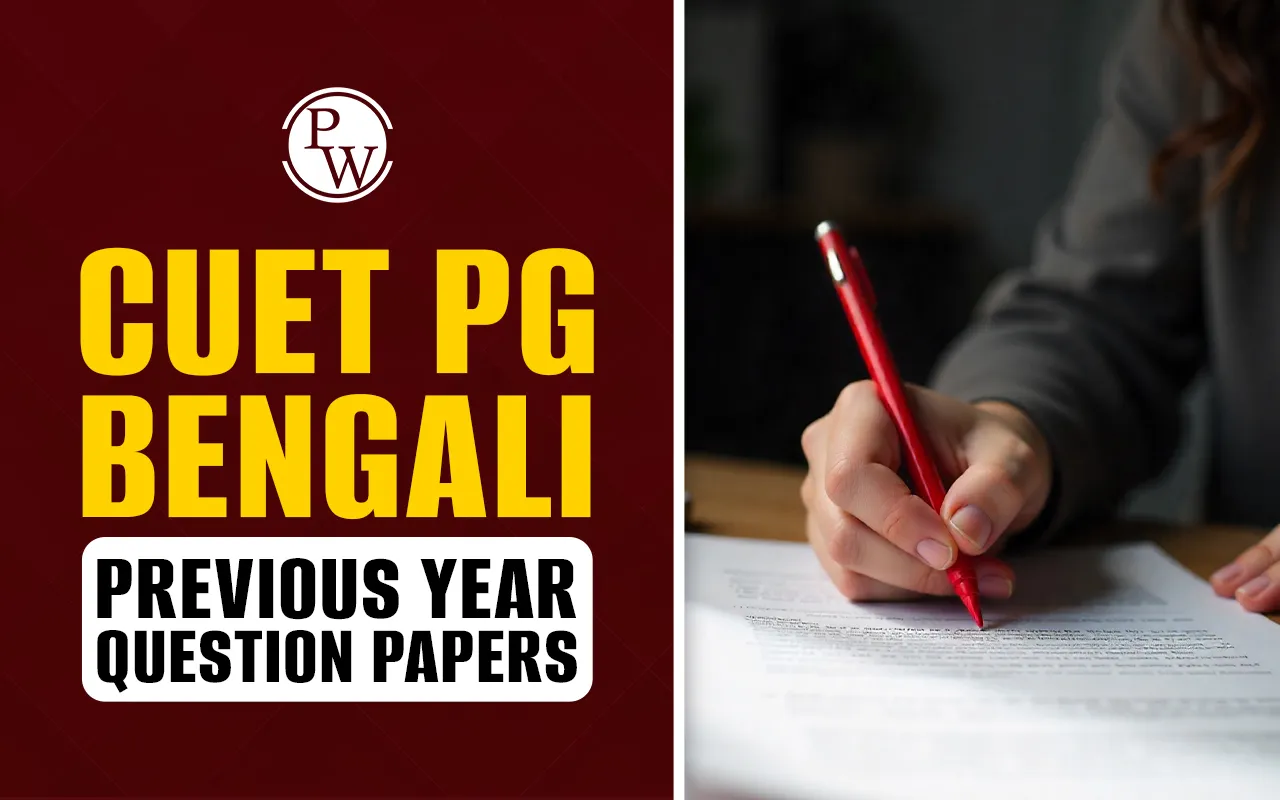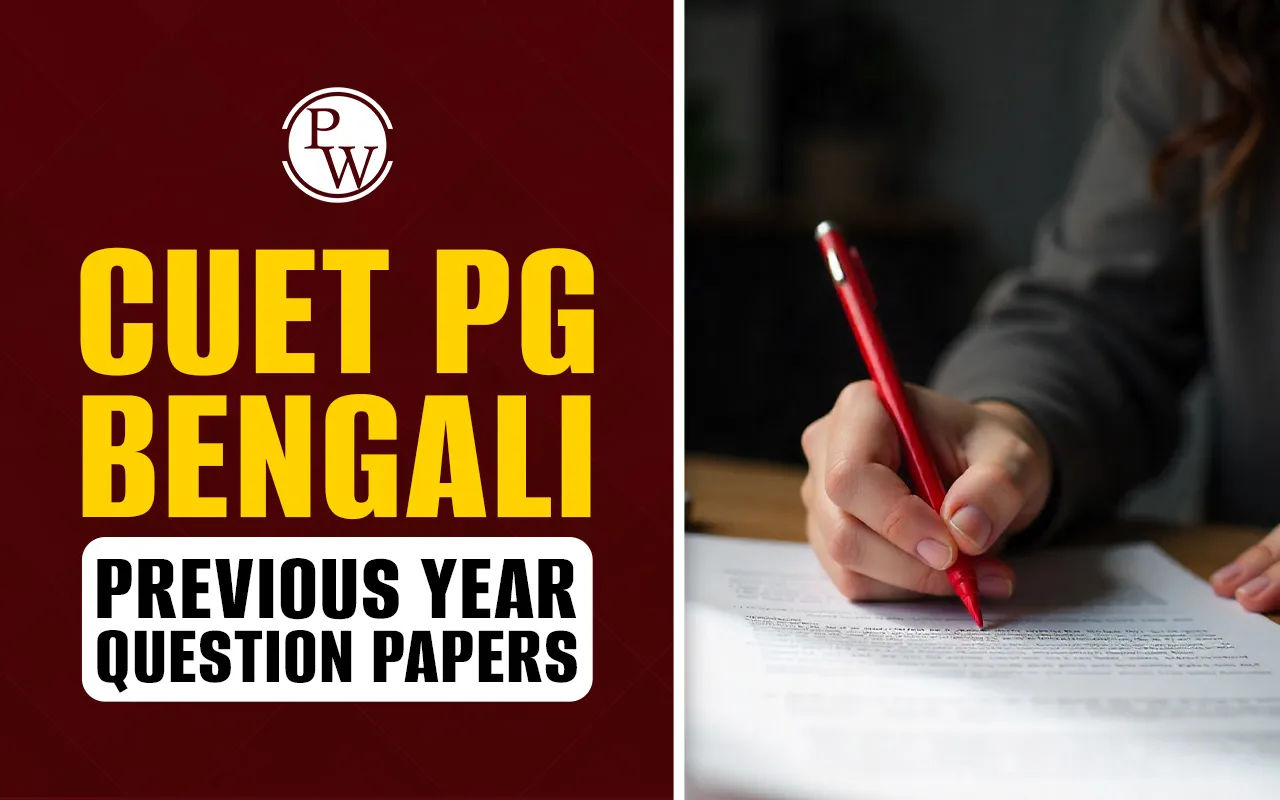

CUET PG Bengali Previous Year Question Papers have become one of the most effective resources for preparing for the CUET PG Exam. Solving previous year papers provides the students with an authentic view of the exam structure, the types of questions asked, and the areas of emphasis across different literary periods and linguistic topics. For Bengali aspirants, the test evaluates not only subject knowledge but also the ability to apply literary understanding under time constraints.
CUET PG Bengali Previous Year Question Papers Overview
Candidates who consistently practice with CUET PG Previous Year Question Papers for Bengali gain an advantage in accuracy, time management, and confidence on exam day. The overview below presents the essential details of the CUET PG Bengali examination of the past few years. Having a clear picture of the exam structure helps students prepare efficiently while avoiding unnecessary confusion:
| CUET PG Bengali Previous Year Question Papers Overview | ||||
|---|---|---|---|---|
| Year | Total Questions | Duration | Marks per Correct Answer | Negative Marking |
| 2022 | 75 MCQs | 120 minutes | 4 | 1 |
| 2023 | 75 MCQs | 120 minutes | 4 | 1 |
| 2024 | 75 MCQs | 120 minutes | 4 | 1 |
| 2025 | 75 MCQs | 120 minutes | 4 | 1 |
Note: This overview table reflects the official format of the CUET PG Bengali exam in recent years. It is possible that NTA follows the same format to create exam papers for the upcoming session, too.
CUET PG Bengali Previous Year Question Papers PDF Links
The official CUET PG Bengali Previous Year Question Papers are available on the NTA online portal. These documents are essential for practice since they mirror the exam’s level of difficulty and question distribution.
| CUET PG Bengali Previous Year Question Papers PDF Links | |
|---|---|
| Year | Link |
| CUET PG Bengali 2022 | Download PDF |
| CUET PG Bengali 2023 | Download PDF |
| CUET PG Bengali 2023 | Download PDF |
| CUET PG Bengali 2023 | Download PDF |
| CUET PG Bengali 2024 | Download PDF |
| CUET PG Bengali 2025 | Download PDF |
How to Use CUET PG Bengali Previous Year Question Papers?
Simply solving previous papers for the Bengali CUET PG paper without a systematic approach limits their effectiveness for preparation. Candidates should adopt the following strategies to maximise their benefits:
-
Candidates should solve each paper within the 90-minute time limit to simulate real examination conditions.
-
Candidates are advised to review incorrect responses carefully and understand why mistakes were made.
-
They should compare performance across multiple papers to identify weak areas such as poetry, prose, or linguistics.
-
They are advised to use the answer keys released by NTA to verify responses and calculate scores accurately.
-
They should revise frequently repeated topics, as past papers often reveal patterns in the selection of questions.
Importance of CUET PG Bengali Previous Year Question Papers
Candidates can learn the importance of solving CUET PG Bengali Previous Year Question Papers from here:
Familiarity with structure: Aspirants become comfortable with the format of multiple-choice questions and the online mode of examination.
Trend analysis: Students can identify frequently asked themes, such as modern literature or historical texts, that might be present in the actual exam paper.
Time efficiency: Regular practice develops the ability to complete the paper within two hours without rushing.
Confidence building: Experiencing the exam environment beforehand reduces stress during the actual test.
Balanced preparation: CUET PG Bengali Previous Year Question Papers highlight which areas receive the most weightage, ensuring focused study.
CUET PG Bengali Previous Year Paper Pattern
Candidates who are willing to appear in the upcoming CUET PG exam for the Bengali subject can go through the following table to be updated with the exam scheme trends:
| CUET PG Bengali Previous Year Paper Pattern | |
|---|---|
| Component | Details |
| Exam Mode | Computer-Based Test |
| Duration | 2 hours |
| Total Questions | 75 multiple-choice questions |
| Question Format | Objective type with four options |
| Marking Scheme | +4 for every correct response-1 for every wrong answer 0 for unattempted |
CUET PG Exam Preparation Tips
Effective preparation for the examination for admission to PG courses in Bengali involves more than rote learning. Aspirants must adopt a structured study plan:
-
Candidates should dedicate equal time to classical and modern Bengali literature, ensuring broad coverage.
-
Students should maintain a reading schedule of important Bengali poets, dramatists, and prose writers.
-
They are required to practise one previous year's paper every week under timed conditions.
-
They should revise grammatical rules, literary theories, and linguistic principles regularly.
-
Candidates should join a mock test series to test their knowledge across multiple subjects and improve their competitive performance.
-
A balanced approach combining past papers, theoretical study, and timed practice creates a strong foundation for success.



